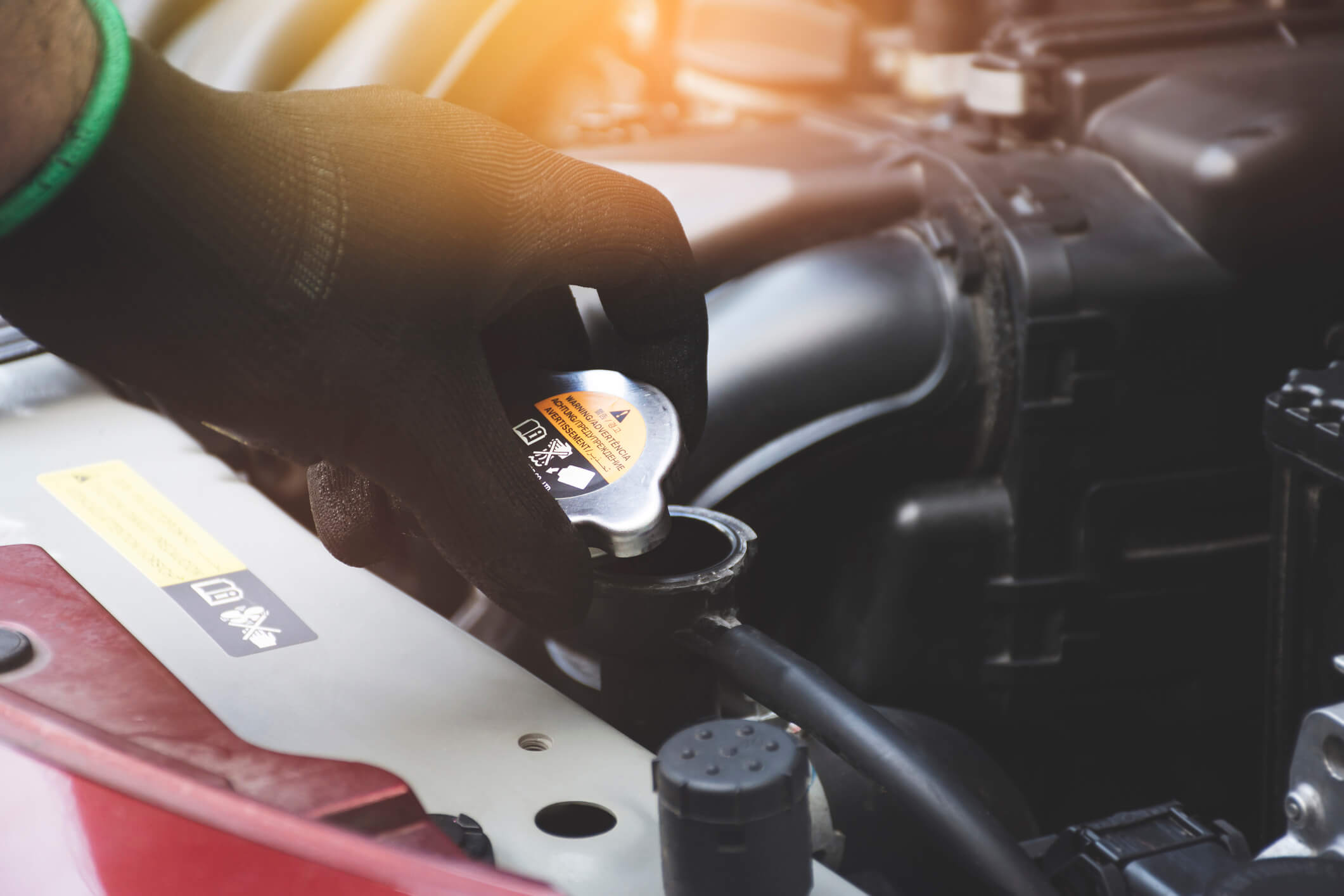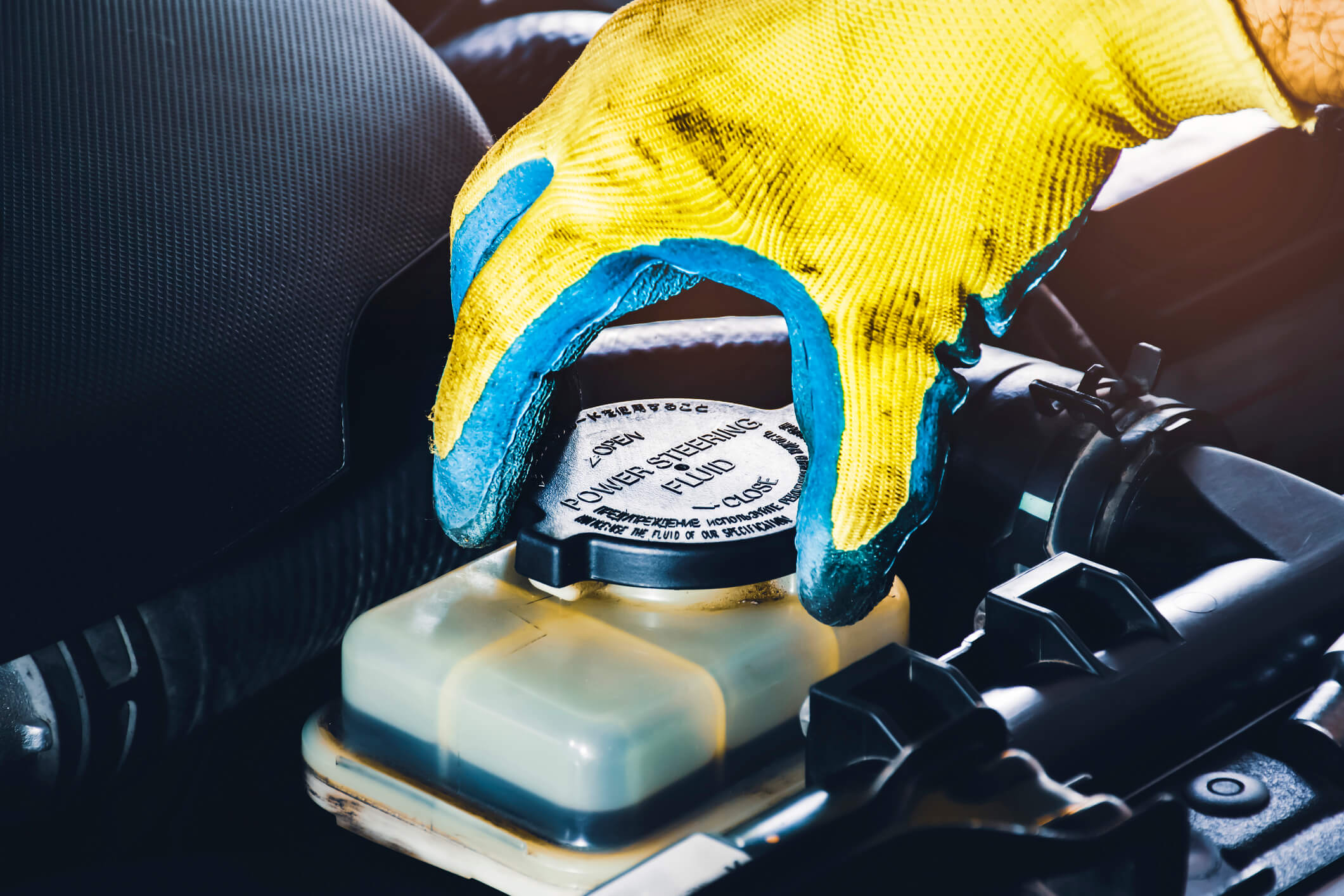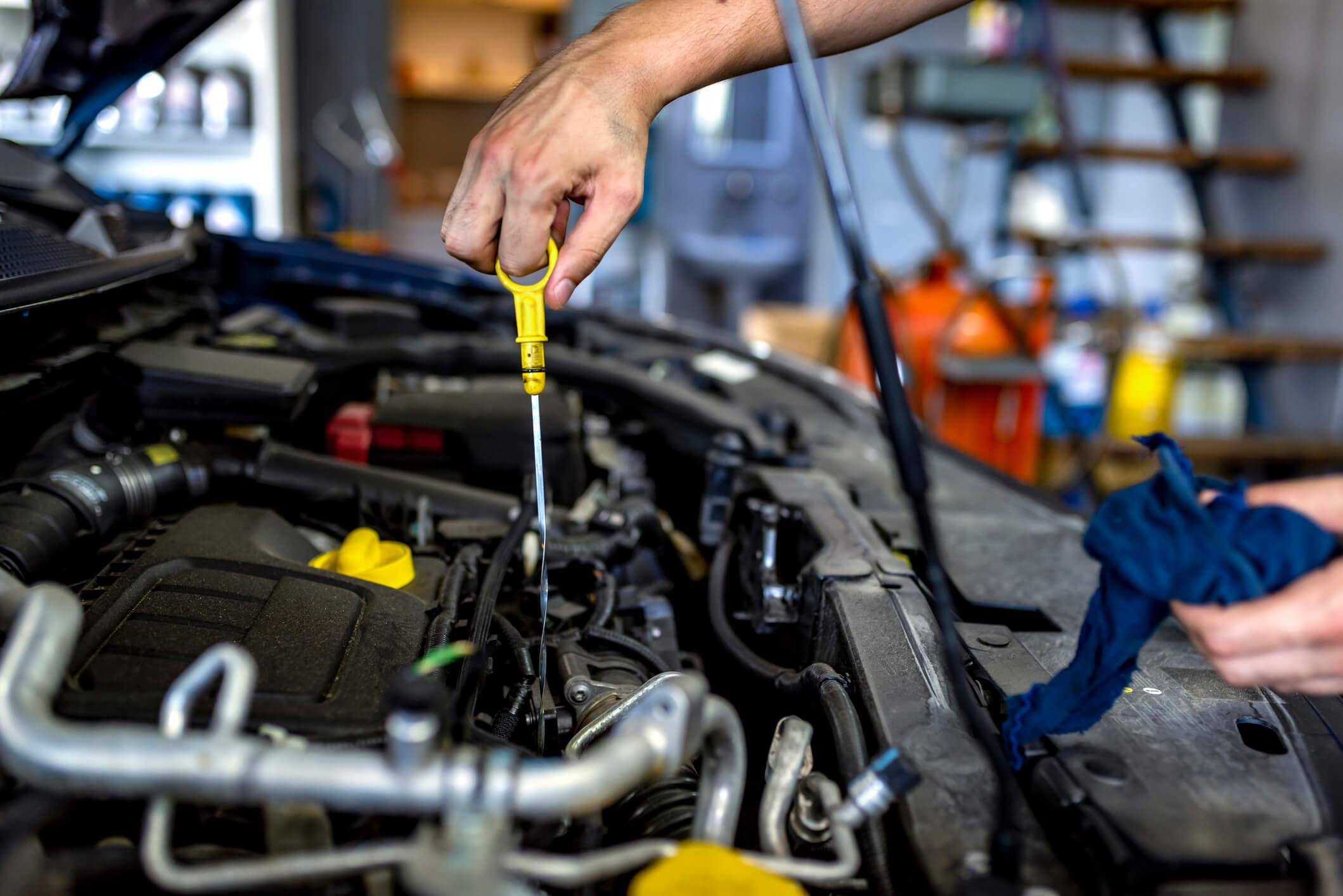Everybody knows that a car requires regular maintenance to keep it running reliably and efficiently. But did you know that maintaining your car’s oils and fluids is one of the most important aspects of car maintenance? Keeping your car’s fluids at the proper level will not only increase your car’s longevity but make it safer to drive. In this article, we’ll look at how to check the various car fluids from the engine oil to the brake fluid.

Engine Oil
The engine oil is probably the most important car fluid. Since the pistons and other engine components move thousands of times a minute, they face extreme friction. Engine oil prevents serious damage to the engine by lubricating the various components while the car is running.
There are three types of engine oils on the market: mineral, semi-synthetic, and fully-synthetic. While all engine oils should be able to do the job, they differ in their effectiveness and lifespan. In terms of cost, mineral oils are the cheapest, followed by semi-synthetic, and fully-synthetic oils being the costliest. Mineral oils also require a change every 5,000 kilometers, while semi-synthetic and fully-synthetic oils should be changed every 7,000 and 10,000 kilometers respectively.
How to Check Your Engine Oil
Checking the engine oil is easy and is something every car owner should know how to do. To start, locate the engine oil dipstick which should be near the top of the engine. Make sure the engine is cold or has been turned off for at least 10 minutes to get an accurate reading. Then, pull the dipstick out and wipe it clean with a cloth or paper towel. Reinsert the dipstick and pull it back out to check the engine oil level.
There are minimum and maximum oil level markers on the dipstick. It’s best to have the oil level to be close to maximum. If it’s near or below the minimum, add more engine oil as driving with low engine oil can damage your engine. If you have a low engine oil level, it’s best to get your car checked as it could indicate that your engine is burning oil or leaking.
Check Your Car Engine Oil Color
Besides the engine oil level, checking its condition is equally important. While checking, look at the color of the oil on the dipstick, if it’s yellow or a light amber color, that’s good news. If it’s dark brown or black, it’s time to change your oil. However, if the oil has a milky color, you could have coolant leaking into the engine.
Another thing you should check is whether there are foreign particles in the oil. To check it, touch the oil on the dipstick. If it’s smooth, you’re all good. However, if it feels gritty, that could mean your engine components are wearing down and getting deposited in the engine oil.

Radiator Coolant
The radiator coolant is another vital car fluid as it prevents your engine from overheating. The coolant absorbs all the heat produced by the combustion and friction in the engine and dissipates it through the radiator. The coolant replacement interval varies between cars, so it’s best to refer to your owner’s manual but in general, it averages from 40,000 to 60,000 kilometers.
How to Check Your Radiator Coolant
To check your car’s radiator coolant, you have to locate the radiator coolant reserve or overflow tank. This tank is located just beside the radiator and has a hose at the top connecting it to the radiator. Check the tank to make sure the coolant level falls between the minimum and maximum indicators on the tank. If the level is low, just fill the tank with coolant up to the top. However, make sure that you add the right type of coolant. If you’re not sure, you can check your owner’s manual.
While it’s uncommon, some cars may come without a radiator coolant reserve tank. If that’s the case, open the radiator cap and make sure that the coolant is filled to the top. Remember to always check the coolant water when your engine is cool as the pressure can build up in the radiator when it’s hot, and you can burn yourself if hot coolant sprays out.
Read More: A Guide to Car Warning Lights and Indicators

Brake Fluid
Brake oil or fluid is essential to prevent accidents as it helps your car to stop when needed. When you step on the brake pedal, a plunger pressurizes the brake fluid in the brake lines. The fluid transfers the force to your brake pads which then clamp onto the brake rotors, slowing down your car. Over time, brake fluid can leak and lead to a spongy brake pedal feel. Water could also enter the brake lines resulting in corrosion in the braking system and reduced braking performance.
How to Check Your Brake Fluid
The brake fluid reservoir is located in the engine bay, usually at the rear of the engine compartment. You can usually identify the brake fluid cap by the brake fluid text and brake symbol on the cap. When checking your brake fluid, make sure the level is between the minimum and maximum indicators.
You can top up the car brake fluid if it’s below the minimum line but make sure it’s compatible with your car. Also, check that the fluid is clean and translucent. If it’s dark and cloudy, you should get it replaced at a workshop. Replacing brake fluid requires a fluid flush, so it’s best to get it done professionally.

Transmission Fluid
The gears, clutches, and valves in a transmission work together to provide smooth gear shifts so you can drive comfortably at any speed. Being an essential car fluid, the transmission fluid lubricates and cools the components inside the transmission so that it works smoothly. If you have low transmission fluid levels, or if it’s deteriorated, your car could have rough shifting, noises during shifting, and random jerking or surging while driving. It’s generally advised to change the transmission fluid every 60,000 kilometers.
How to Check Your Transmission Fluid
Checking the manual or automatic transmission fluid involves the same process. Some cars have a transmission fluid dipstick while others require a mechanic to check it. If your car has this dipstick, it should be located near the rear of the engine bay, where the transmission meets the engine. Keep the engine running while you check the fluid it needs to be at operating temperature to get an accurate reading. You should also check your owner’s manual whether to keep your car in Park or Neutral gear while taking the reading.
If your engine is warm enough, you can check the oil level on the dipstick and make sure that it’s within the minimum and maximum levels. If the level is low, you can add more fluid. After checking that you’ve added enough, shift the gear selector through all the gears with your foot on the brake. This will help the new transmission fluid to travel through the whole transmission and coat each component. Transmission fluid is typically red and translucent when new. If it’s dark, gritty, or cloudy, it’s a sign that it should be changed.

Power Steering Fluid
Most modern cars have a hydraulic power steering system that uses fluid to make turning the steering wheel easy at any speed. When you’re low on power steering fluid, the steering could feel heavy or jerky to turn which impacts your car’s maneuverability. The recommended replacement interval for the power steering fluid is every 50,000 to 100,000 kilometers depending on the vehicle, so be sure to check your owner’s manual.
How to Check Your Power Steering Fluid
Checking the power steering fluid is similar to checking other car fluids. Most vehicles have a power steering fluid reservoir with a cap that says ‘power steering fluid’. It’s usually located at the rear end of the engine bay near the driver’s side. You then need to check the fluid level and make sure it’s between the minimum and maximum markings on the reservoir.
You can top up the fluid level if it’s low, but make sure to use the fluid type specified for your vehicle. Power steering fluid is usually red, pink, or yellow in color when new and turns brown or black when it ages. If you have a dark colored power steering fluid, it’s a good time to get it replaced.
Read More: A Guide to Wheel Alignment and Balancing

Windshield Washer Fluid
A clear windshield is essential for safe driving, so maintaining your windshield washer fluid is important. You can check your windshield washer fluid by locating the reservoir with the windshield symbol on its cap. If the fluid level is low, you can simply add new washer fluid into the reservoir until it’s full and close the cap.
Windshield washer fluids are available at auto supply stores and petrol stations, and some even contain special additives to keep your windshield clearer in the rain. But in a pinch, you can make your own windshield washer fluid at home by diluting a few drops of shampoo with water. Now that you know how to check the various car oils and fluids, you can make sure they’re in good condition without waiting for problems to arise.
Choose CARSOME Certified for Quality Pre-owned Cars
If you’re looking for a pre-owned car in top condition, check out the large selection of cars at CARSOME. Each of our cars is put through a 175-point inspection to ensure they’re free from major accidents and flood damage. Only selected cars pass our CARSOME Certified requirements so each car has our guarantee of quality. We also replace the lubricants and fluids in our cars so they can serve you better.
Additionally, every CARSOME Certified car includes:
- A professional refurbishment to give the car complete comfort, safety beyond standards, and a refurbished aesthetic.
- Fixed prices without any hidden fees, including road tax, Puspakom inspection fee, ownership transfer fee, and loan application fee.
- A five-day money-back guarantee in case you change your mind.
- A one-year warranty to ensure further peace of mind.
So what are you waiting for? Visit CARSOME and find your dream car today!
